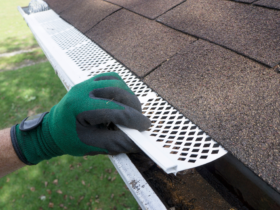If you have only ever used a handsaw for cutting materials such as wood and plastic, you will find a circular saw much easier and more efficient. This powerful tool has the ability to cut cleanly through a variety of materials both quickly and easily, meaning less effort on the part of the user. There are so many benefits to using a circular saw, such as the fact that it can be used for decorative cuts on top of being lightweight and portable.
However, some people simply do not know how to use this tool in the most efficient way. They fail to get the most from their saw because they are not aware of what it is capable of and how to look after it properly. Below are a few tips and tricks that will help.
Inspect Before Each Use
You should always inspect your saw before you use it to ensure that everything is in working order. Even if it was working fine the last time it was used, it pays to give it a quick once-over before and after each use. The experts at Devour Tools (visit website here) say that metal blades should always be examined to ensure they are not chipped and that they do not have any broken segments. You should also check that the blade guard can be retracted smoothly and that it snaps back in place once it has been released.
Make Sure the Blade is Set Correctly
Setting the correct blade depth will guarantee a clean cut. Some people make the mistake of setting the blade too deep, which means more of it is exposed during the cut. This is dangerous, and it can also cause it to kick back. The best way to calculate the correct depth is to hold the saw along the material to be cut with the blade guard retracted. Make sure the saw is unplugged when you do this. The blade should only extend between a quarter and a half inch below the material being cut.
Support Boards
When you are cutting wood, you need to ensure that the cut end can fall freely away but that you support it while it is being cut. Never grip the end of the wood because this can restrict movement and cause kickbacks. Nevertheless, you should not just allow the wood to fall away without any support as this can result in the cut end pulling a piece of wood from the other end of the board with it as it drops. You should never cut wood in the middle of two sawhorses either because as you near the end of the cut, the wood will dip downwards. This is extremely dangerous and can also result in the blade being pinched.
Make a Smooth Cut
There are things that you can do to ensure a smooth cut, particularly if you are cutting plywood. You should never force the saw aggressively through the wood and make sure that the ‘good’ side of the wood is facing down. This is because the blade will be spinning upwards as it cuts. This will give you a cleaner cut on the side of the plywood that will be visible. You can reduce splintering by placing masking tape over the cut line.
Lift the Blade Guard When Making Angled Cuts
When cutting at an angle, there is a risk that the blade guard will catch on the edge of the wood. You can avoid this by lifting the guard up until you have cut a few inches. You can then release it and finish the cut.



























Leave a Reply